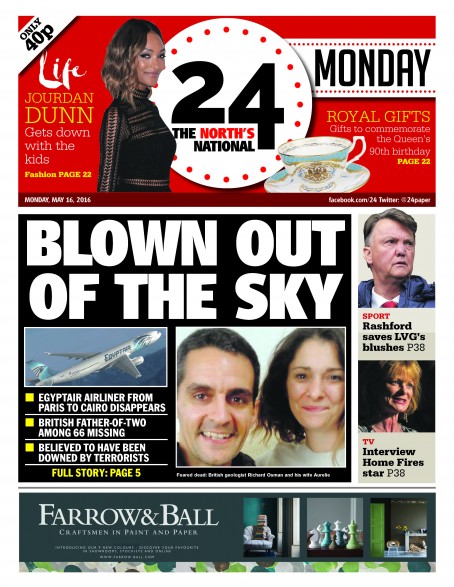
After the demise of New Day, 24, the North’s National Newspaper has also shut after just six weeks.
Like most media pundits, I have no pleasure in being right that 24, the North’s National Newspaper has shut after just six weeks.
I flippantly said that not even Kiefer Sutherland could save this 24, sadly, like so many people in the newspaper industry, we wished it success, but deep down knew it had little hope.
Six weeks is not long enough to see if something will work. However, I would be more concerned about the thought processes which set the wheels in motion to launch the paper in the first place, as I was over the strange decision to launch New Day, which lasted just nine weeks.
I admire entrepreneurial spirit, but with the landscape increasingly bleak for papers in the regions, just look at the latest ABC figures, and the next batch will not look much better.
The figures suggest that the newspapers with the lowest sales have a lesser decline because there’s nowhere else to go in terms of decline, while the biggest papers just keep losing big chunks of sale.
The dilemma an editor faces today is where to put his resources. Within a company such as Trinity Mirror there is a clear digital first strategy.
Previously, I have discussed how, despite putting a brave face on it, the newspapers are taking a back seat as TM newspapers strive to get a slice of the digital audience.
This has left many journalists at the group upset with industrial action threatened at some of the newspapers.
But the reality is that there’s a relentless move to bring in the audience and get page views at all newspapers.
Based on this the editor has to decide to whether to put all their eggs in one basket and just do digital or carry on doing the paper and hope no-one notices that digital performance is lagging behind.
Of course, you might say that editors need to do both. The reality is that with fewer staff than ever before you cannot be all things to all men.
The philosophy of digital content has shifted. In the early days, regional newspapers used to put up every story written for the newspaper, often in one bulk upload.
Things are more sophisticated now and there’s a constant flow of content with particular emphasis on key times of the day and for the digital operation, rather than throwing up as many stories as possible online, to polish fewer stories and build more content around it.
The outcome is that many of the digital stories can take time to put together. If a reporter is out live blogging from an event, or on Facebook Live, taking pictures, and sending out Tweets, the chances of doing many more stories in a day is limited.
So when the print gang turn up to produce the newspaper they may not have as much content to play with as they had in a bygone era, where story content and value for money were high on the editor’s agenda.
What I have noticed is to compensate for the drive on digital in the regions, paginations have gone down, as has story count, while at the same time the cost of buying a newspaper has risen dramatically.
While the decline in sales has been endless, the above is a recipe for a nose-dive.
But does it matter? The business is firmly placed in digital land and the newspaper is just one aspect of that.
While The Independent took a brave step to bin its paper version and go digital only, I still think that a modern media firm needs both a presence online and in paper.
At the moment the revenue from newspapers sales continues to boost the coffers of these firms, but increasing cover price will inevitably see the readers disappear.
Once this happens, a different model for print will have to be created and the once great regional beasts will probably have to consider either charging £2 a copy or going free or part free.
But, as the grip on staff numbers tightens, who is going to want to read regurgitated content in the newspaper which appeared online 12 hours earlier?
My thoughts were always to make online the first read and the paper the last read.
The Times has taken a similar stance, both in paper and online. It doesn’t published continuously unless a big story breaks. This allows the paper to print online in an edition structure and the benefit is that readers get the fuller story rather than endless snippets.
This flies in the face of just about every other news media outlet, but it is not without merit when you think about the endless content put out when a story is breaking and having to piece it all together like a jigsaw.
It is an experiment worth watching but perhaps reflects the readership of The Times, 55+, who frankly do not fancy endless news feeds.
However, we all have to remember that the paper is still the cash cow. Simply, advertisers pay pence for page impressions and the cash coming in is not enough and certainly will never reach the scale of the amount of money made by newspaper businesses in their pomp.
Finally, I was with an SEO news guru a week or so ago and they stopped me in my tracks. Passionately they spoke about how to get your news on top on the Google pile and it’s often down to the fine art of SEO headline writing.
Who were the best headline writers? Sub-editors. The expert went onto say that media groups will regret not having this much-maligned breed back in their newsrooms, surely they said, they would have been the best SEO headlines writers in the business?
Food for thought.

